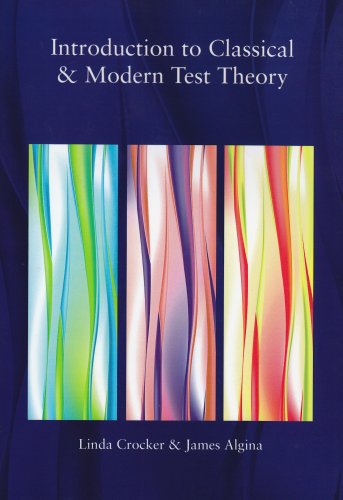Introduction to Classical and Modern Test Theory pdf download
Par wyatt thomas le mardi, mai 17 2016, 02:46 - Lien permanent
Introduction to Classical and Modern Test Theory. Linda Crocker, James Algina

Introduction.to.Classical.and.Modern.Test.Theory.pdf
ISBN: 0495395919,9780495395911 | 527 pages | 14 Mb

Introduction to Classical and Modern Test Theory Linda Crocker, James Algina
Publisher: Wadsworth Pub Co
For five days and provided at least 3 full days of complete data. Theory of generalizability: A liberalization of reliability theory. Crocker L, Algina R: Introduction to classical and modern test theory. In this context, a true score represents “the average score a person would obtain on an infinite number of parallel forms of a test, assuming that the person is not affected by taking the tests (i.e., assuming no practice or .. The classical testing theory model of scale construction has a long history, and there are many textbooks available on the subject. Belmont, CA: Wadsworth/Thomson Learning. New York: Rinehart & Winston; 1986. The new scales were analyzed using Classical Test Theory (CTT) and IRM; a reduced set of items was produced with IRM and correlated with accelerometer counts per minute and minutes of sedentary, light and moderate to vigorous activity per day after school. ACCF/AHA 2010 Position Statement on Composite Measures for Healthcare Performance Assessment. The concept of parallel tests is also commonly invoked as part of classical measurement theory. Kline, A Handbook of Test Construction: Introduction to psychometric design (London: Methuen, 1986) p. Algina, Introduction to Classical and Modern Test Theory (New York, NY: Holt, 1986) p. Introduction to classical and modern test theory. New York: Holt, Rinehart and Winston.